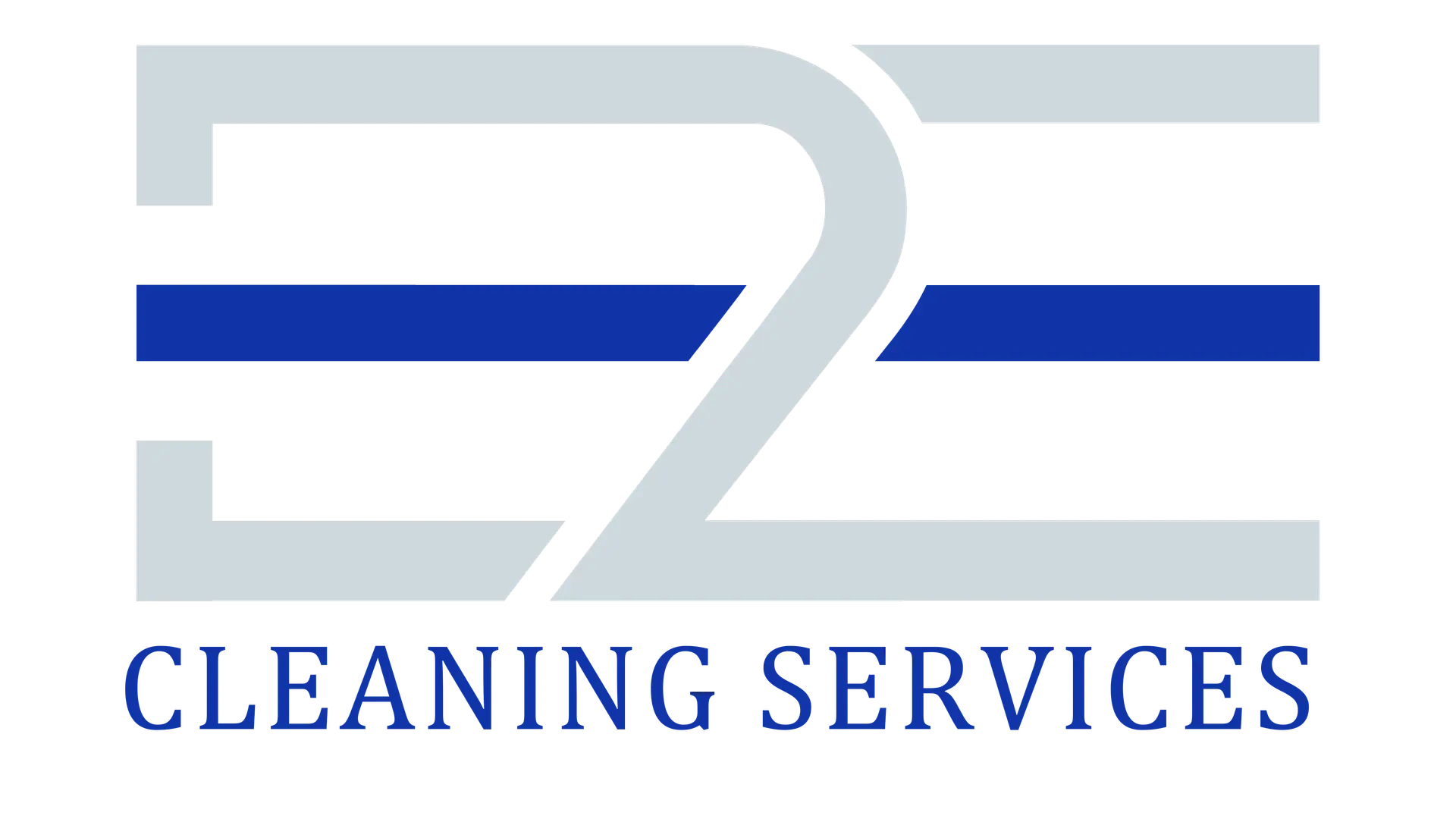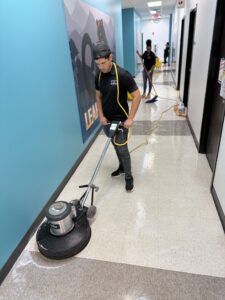Since the COVID-19 pandemic, the commercial cleaning landscape in Florida has been drastically changed. This article explores how the office cleaning protocols have moved from basic appearance maintenance to full health protection strategies.
Consequently, we examine governing Florida regulations, identifying advanced disinfection technologies; established high touch surface protocols; air quality parameters and the reinforcement of verification systems that define modern commercial cleaning.
Practical insights on how to implement these improved standards will allow facility managers and business owners to balance costs with employees’ expectations for initially healthier workspaces.
The Evolution of Office Cleaning in Post-COVID Florida
After the COVID-19 pandemic, the paradigm of the commercial cleaning industry in Florida changed. Prior to the pandemic cleaning the office was more about looks, carpet vacuumed, trash removed, surfaces dusted.
Today, cleaning protocols are strategic health interventions intended to reduce pathogen and workplace wellness.
Florida’s environmental challenges have always been unique and have always needed specialized cleaning methods. The high humidity levels in the state is a factor for mold and bacterial growth, and at the coastal location, where business face salt laden air that leave a residue stored on surfaces.
Part of current cleaning protocols are due to the pandemic lessons, but part of this is also because these regional factors that have accelerated the development of more rigorous cleaning standards.
According to the International Sanitary Supply Association (ISSA), “What has been an exceptional effort just a few months ago is now the new baseline.” After COVID, cleaning protocols are not just to remove visible soil but also they are thought to deal with microscopic threats through a validated disinfection process and to kill targeted pathogens.
Commercial facilities have been recommended to increase cleaning frequency, enhance disinfection of high touch surfaces and improve documentation processes according to the Florida Department of Health. These efforts are consistent with CDC guidelines but taking into account Florida’s special environmental circumstances, namely higher ambient temperatures that may affect chemical efficacy as well as the humidity in drying times.
Business owners have seen that better cleaning standards fulfill two purposes: protecting health and showing that the organization cares about the well-being of its employees. In Florida’s growing business centers, implementing visible cleaning protocols has become a competitive advantage in recruiting and retaining talent.
Current Cleaning Standards in Florida
Current Cleaning Standards in Florida
Florida’s commercial cleaning standards are now based on federal guidelines with state specific requirements adjusted to regional conditions. Commercial properties must follow baseline protocols established by the Florida Department of Business and Professional Regulation and the Florida Department of Health.
Key regulatory requirements include:
- Use of EPA-registered disinfectants that have been proven effective in killing enveloped viruses
- Increased frequency of disinfection for high-touch surfaces
- Documenting cleaning schedules and application of product
- Training requirements for cleaning personnel
- Standards for ventilation that take into account the humidity of Florida.
Under Florida’s regulation, it has become necessary to distinguish between cleaning, sanitizing and disinfecting.
Cleaning removes visible soil and some microorganisms; sanitizing decreases bacteria to levels considered safe by public health standards; disinfecting kills most pathogenic microorganisms on surfaces.
All three processes are required to be applied sequentially in modern commercial protocols.
Florida’s standards evolved since the year 2020 and began to include methods of verification. In the past visual inspection alone is no longer sufficient and quantifiable testing methods such as ATP (adenosine triphosphate) monitoring are incorporated into cleaning protocols. ATP testing is used to measure biological residue on surfaces, so that ATP testing gives you objective data on how well you cleaned.
Commercial properties are now being recommended by Florida’s DBPR to create cleaning logs on systems, not only showing when the area was cleaned, but what products were used, how long they sat, and proof of the verification methods. The dual purposes of these records are to demonstrate regulatory compliance and to reassure safety for building occupants.
General commercial cleaning has been influenced by healthcare-adjacent standards. Terminal cleaning (comprehensive disinfection of all surfaces) is now being done by many Florida offices after confirmed illness cases in the workplace, and hospital grade disinfectants are being used for routine maintenance.
Beyond Basic Sanitization
One of the most significant advances in Florida’s commercial cleaning standards is the evolution of cleaning chemistry. The traditional cleaning products were aimed mainly at soil removal however, there was not much capability of pathogen control.
The current professional formulations need to have broad spectrum efficacy against bacteria, virus, and fungi, while being surface compatible and user safe.
Therefore, quaternary ammonium compounds (‘quats’) are still considered industry workhorses with their reasonably low toxicity profiles and reliable pathogen control. However, next-generation formulations have delivered greater efficacy against challenging pathogens such as norovirus, and have reduced the time required for the necessary contact efficiency in Florida, given the workload of busy offices where surfaces need to be up and running time and time again.
Many hydrogen peroxide based disinfectants have taken market share in the Florida commercial cleaning sector. These products break down into water and oxygen leaving a very minor residue; very important for Florida, where dust and sand can get attracted by chemical residues that can affect the surfaces and air quality.
Revolutionary application technology, such as electrostatic spraying, has transformed commercial spaces in Florida, especially the larger commercial spaces.
Disinfectants with a positive electrical charge wrap the solution around the surface, providing better coverage than traditional spraying or wiping.
As a result, it is ideal for treating complex surfaces such as keyboards, desk phones and fabric partitions that are difficult to clean manually.
Florida’s cleaning standards have become validated by its efficacy.
Nowadays, professional cleaning companies are using:
- Measure of biological residue by ATP testing
- Fluorescent marking systems to confirm surface area coverage and cleanliness
- Techniques for environmental sampling of specific pathogens
- Systems that track disinfection cycle documentation
The standard is now two step cleaning and disinfection protocols. The first step is to remove soil that may interfere with disinfectant efficacy and the second step is to apply disinfectant with appropriate dwell time. This method allows disinfectants to work without being rendered ineffective by organic material.
Florida’s requirements for commercial cleaners have changed as well. The GBAC STAR (Global Biorisk Advisory Council) accreditation and the ISSA’s Cleaning Industry Management Standard (CIMS) have become important credentials for service providers to show competence in advanced disinfection protocols.
High-Touch Surface Protocols
High touch surfaces are now the focus of Florida’s commercial cleaning standards, as these are the surfaces that are often touched by numerous individuals throughout the workday. These are primary transmission vectors for pathogens and need special attention in the modern cleaning protocols.
In Florida offices, common high touch surfaces are:
- Push plates, door handles, and knobs
- Light switches and control panels
- Elevator buttons and handrails
- Shared equipment (printers, copiers, coffee machines)
- Conference room tables and chairs
- Bathroom fixtures
- Break room appliances and surfaces
- Reception areas and sign-in kiosks
Click Here to ensure your workplace stays protected against pathogens year-round
Frequency recommendations have intensified substantially. In contrast to pre pandemic standards that might have suggested daily cleaning of these surfaces, current protocols usually require multiple disinfection cycles during the workday. Occupancy levels and usage patterns dictate the exact frequency but many Florida offices are running 2-4 hour disinfection cycles on critical touch points.
The requirements of the documentation have tightened. Increasingly, Florida businesses keep detailed logs of:
- Specific surfaces disinfected
- EPA registration numbers of products used
- Application method
- Disinfectant contact time observed
- Time and date of service
- Personnel responsible
These records are used for compliance and communication, as evidence of due diligence in case of questioning by health authorities or employees.
It has become an important consideration of material compatibility. Some surfaces, such as electronics, natural stone and some plastics, can be damaged by repeated application of disinfectants. Current cleaning protocols generally dictate selecting products based on surface type, using alcohol based formulations for electronics and gentler products for sensitive materials.
Color coding systems have been implemented by many Florida offices to prevent cross contamination. Cleaning personnel have separate cleaning tools (typically color identified) for restrooms, food preparation areas, and general office spaces, and thus minimize the risk of passing pathogen from one zone to another.
Cleaning protocols are moving towards touchless operation. Many Florida facilities are reducing high touch points with touchless fixtures (faucets, soap dispensers, door openers). These innovations reduce the cleaning workload, but require specialized maintenance protocols to ensure reliable operation.
Air Quality Considerations
Management of indoor air quality is a unique challenge in Florida’s climate conditions. Ambient indoor humidity, excessive cooling season, as well as periodic environmental occurrences (hurricane and red tide events) inevitably influence Indoor Air Quality in commercial space.
However, modern cleaning standards now understand that surface disinfection is only one part of a better approach to healthier indoor environments.
Cleaning protocols now work alongside HVAC maintenance requirements. This integrated approach includes several key standards:
- Regular inspection and cleaning of air intake vents
- Increased frequency of filter replacement
- Higher MERV ratings for filtration systems (typically MERV 13-16)
- Antimicrobial treatments applied to the HVAC components using EPA-registered fungicide for areas with these organisms.
- Monitoring of systems performance
Many Florida facilities have increased outside air intake to dilute potential airborne contaminants, and ventilation requirements have intensified. Still in Florida’s hot climate, energy efficiency considerations for this approach must be balanced, and frequently result in upgrades to the HVAC systems to accommodate increased cooling loads.
Florida commercial spaces have widely adopted air purification technologies. These include portable HEPA filtration units to complete building solutions that incorporate such technologies as:
- Ultraviolet germicidal irradiation (UVGI)
- Bipolar ionization
- Photocatalytic oxidation
- Activated carbon filtration
Control of humidity has become recognized as an important factor in Florida’s indoor air quality. Relative humidity should be maintained between 40–60% because this is a comfortable range, but also because lower RH conditions have a destructive impact on pathogen viability.
Today, most cleaning protocols include monitoring interior relative humidity and acting to prevent conditions that might lead to mold growth.
Water intrusion has become a standard practice to be inspected regularly. Florida has severe weather events that can compromise building envelopes and create conditions for biological contamination.
Now, cleaning protocols usually include visual inspection for water damage and then immediate remediation of moisture problems.
The maintenance of carpet and soft surface has evolved to deal with microbial reservoirs. Local humidity can promote microbial growth in porous materials and therefore enhanced extraction cleaning methods and antimicrobial treatment application is required. Carpeting replacement cycles have been accelerated or hard surface flooring used which supports more thorough disinfection in many facilities.
Environmental monitoring that verifies and monitors air quality is becoming increasingly common.
Regular testing is being implemented by Florida businesses for:
- Particulate matter
- Volatile organic compounds (VOCs)
- The levels of carbon dioxide (as a proxy for ventilation effectiveness)
- Biological contaminants
Conclusion: Florida’s Cleaning Future
Florida’s commercial cleaning standards have evolved from appearance based cleaning to health based environmental management. The pandemic has accelerated this transformation but the understanding of indoor environmental quality has changed these expectations of workplace cleanliness permanently.
The future may bring to Florida’s commercial cleaning several trends that are likely to affect:
- Cleaning verification will continue to be integrated into building management systems, with the data of cleaning effectiveness and environmental conditions being delivered real time using sensors technology. These systems allow for adaptive cleaning protocols that respond to current conditions rather than following rigid schedules.
- Chemistry innovations will be aimed at developing products with an appropriate balance of efficacy, safety and environmental impact. Chemical reduction concerns are likely to reduce during time but pathogen control will remain.
More and more, manual cleaning will be supplemented by automation, especially in routine and laborious tasks as it pertains to floor care and high touch surface disinfection. Already, robotic systems with UV disinfection capabilities are appearing in Florida’s healthcare facilities, and are likely to expand to commercial office settings.
Cleaning practices will become transparent and will become a competitive advantage. In an ever more health conscious workforce, Florida businesses that clearly express their cleaning protocols, verification methods and healthy environments, will attract and retain talent.
Florida’s commercial cleaning standards have eventually become no longer a simple service but a sophisticated risk management strategy that affects employee wellness, operational continuity and organizational reputation.
Embracing such escalated standards brings benefit for all Florida businesses: it helps them to promote healthy and productive workplaces, and to be able to make a key commitment to the welfare of employees.






